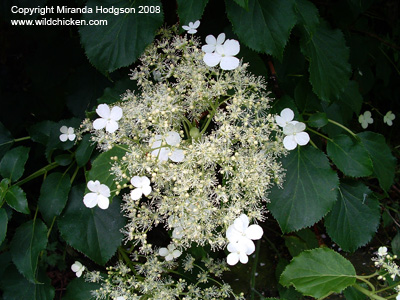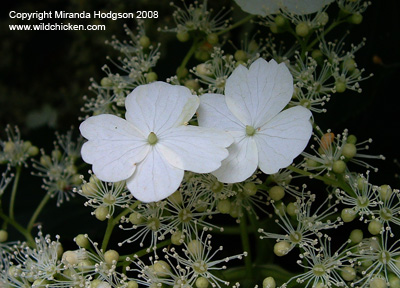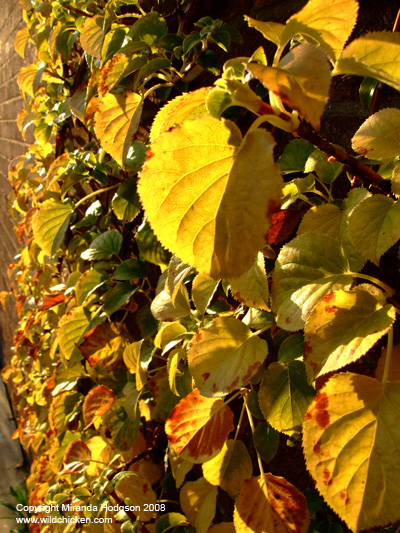



Hydrangea anomala subsp. petiolaris (also called Climbing Hydrangea)
Hydrangea anomala
subsp. petiolaris
Hardy, deciduous, climbing shrub grown for its display of lacy white flowers in summer, with rich green foliage in summer that turns yellow in autumn. Originally from SE Asia. It grows well in shade and will happily clothe a north-facing wall - although the growth is slow for the first few years, once established it will romp away up a wall or over a pergola or large support, but without becoming a nuisance.
I have seen this plant growing without more support than a fence and it looked pretty good. It would never get very tall, of course (this one had grown to about 2m and looked more like a bush than a climber), but it seemed to be supporting itself well enough, with the main stem being about 10cm in diameter.
Grown up a wall, Climbing Hydrangea will provide shelter for small birds, such as wrens, and beneficial insects.
White flowers and green foliage in summer. Bright yellow foliage in autumn.
Habit - clinging climber with horizontal branching. H: up to 15m, S: up to 5m
Stem - woody, reddish-brown, the outer layers of bark peel off in thin layers here and there. Clings to supports by means of adventitious roots (roots that grow out of the stems), as ivy does.
Leaves - glossy, mid-green, rounded oval to heart-shaped, with lightly serrated edges.
Flowers - flat clusters of four-petalled white flowers are borne in summer at the tip of the stems. The fertile flowers in the center of the cluster grow with showy, sterile flowers.
Does well in shade but can tolerate sun
Fertile, moist but well drained.
Hardy
Very little needed apart from any pruning needed to keep it in shape. The old flower heads will offer some protection to the young shoots nearby and will also add winter interest when frosted.
Try to avoid pruning as this will remove the flowering buds.
By stem cuttings of ripe wood in summer or layering.
Garden Plant Information list of plant care info by botanical name